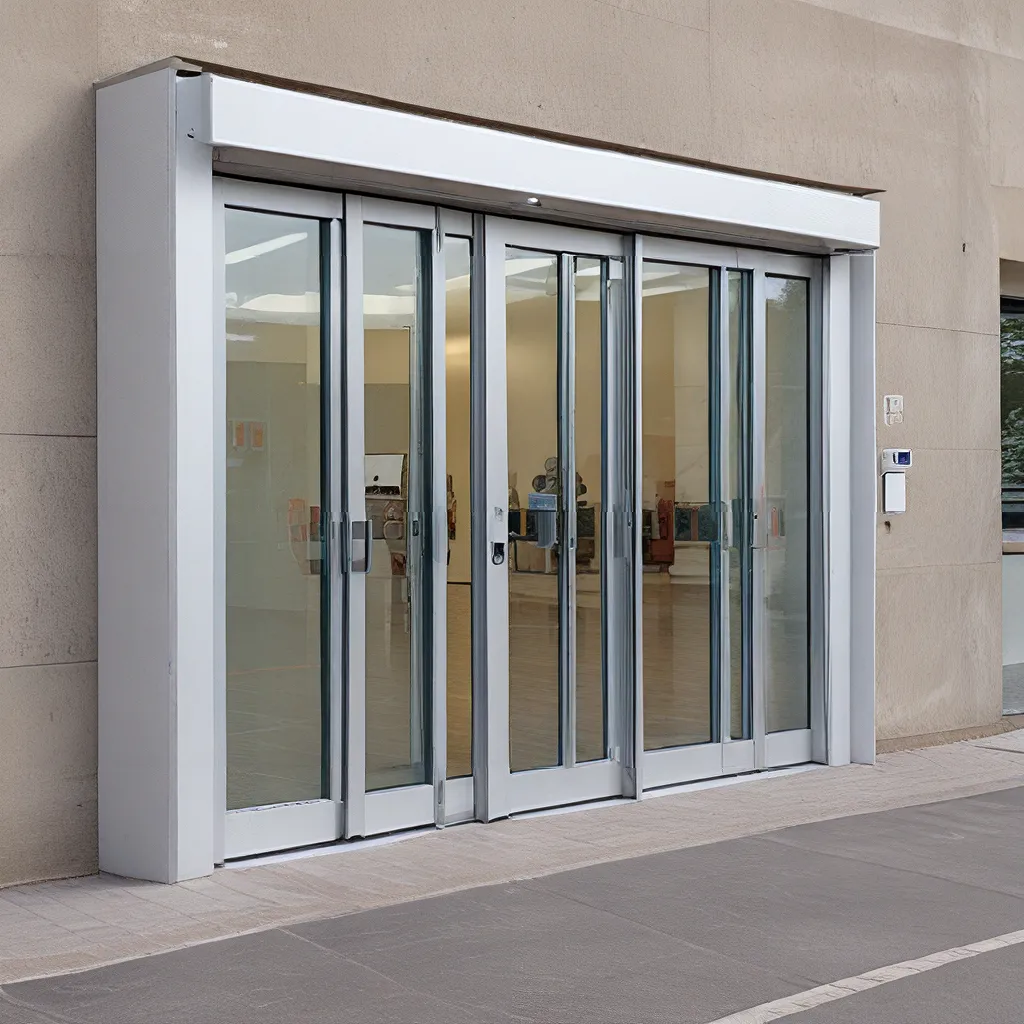
In today’s fast-paced world, efficiency and convenience are paramount, and the doors in our homes and businesses play a crucial role in achieving these goals. Automated doors, a cutting-edge technology, offer a seamless solution that enhances both the user experience and the overall energy performance of a building.
The Rise of Automated Door Systems
Automated door systems have gained significant popularity in recent years, as they provide a range of benefits that traditional manual doors cannot match. These doors, operated by sensors or remote controls, offer a level of convenience and accessibility that has transformed the way we interact with our built environments.
One of the primary advantages of automated doors is their ability to improve accessibility. For individuals with mobility challenges, such as the elderly or those with disabilities, automated doors eliminate the need for physical effort to open and close them, making entry and exit a smooth and effortless process. This not only enhances the user experience but also promotes inclusivity and equal access for all.
Moreover, automated doors are designed with energy efficiency in mind. By automatically opening and closing based on user presence, they minimize the amount of time doors are left ajar, reducing heat loss or air conditioning escapes. This, in turn, leads to significant energy savings and a more sustainable building operation, benefiting both the environment and the building’s operating costs.
Exploring the Mechanics of Automated Doors
The mechanics behind automated door systems are both sophisticated and straightforward. These doors are typically powered by electric motors that are triggered by a variety of sensor technologies, such as motion detectors, pressure pads, or even facial recognition systems.
ASSA ABLOY’s SL500 Express Slide is a prime example of an advanced automated sliding door system. It features sensor-activated technology that responds to the presence of users, ensuring a seamless and effortless entry and exit experience. The system’s energy-efficient design also helps to minimize heat or cooling loss, contributing to overall building performance.
Another prominent player in the automated door market is NABCO’s GT1175 Standard Sliding Door. This high-performance entrance system is designed to complement any entry, with configurations that include fixed sidelights or full breakout options. The GT1175 is equipped with sensor systems that comply with the ANSI A156.10 standard, promoting reduced liability and increased safety for users.
Advantages of Automated Doors
The benefits of automated doors extend beyond just convenience and energy efficiency. These advanced systems offer a range of advantages that can have a significant impact on both residential and commercial settings.
Improved Accessibility
For individuals with mobility challenges, automated doors provide a seamless and barrier-free entry and exit experience. This not only enhances accessibility but also promotes inclusivity, ensuring that everyone can access a building with ease.
Enhanced Energy Efficiency
By automatically opening and closing based on user presence, automated doors help to minimize heat loss or air conditioning escapes, resulting in significant energy savings and a more sustainable building operation.
Increased Security
Many automated door systems are integrated with advanced security features, such as access control and video surveillance. This helps to enhance the overall security of a building, providing peace of mind for both occupants and property owners.
Reduced Maintenance Costs
Automated door systems are designed with durability and low maintenance in mind. By reducing the wear and tear associated with manual door operation, these systems can lower maintenance costs and extend the lifespan of the entryway.
Improved Aesthetics
Automated doors can also enhance the visual appeal of a building, with sleek and modern designs that seamlessly integrate with the overall architectural style. This can improve the curb appeal and create a positive first impression for visitors.
Considerations for Automated Door Installation and Maintenance
When it comes to incorporating automated doors into a building, there are several important factors to consider, from proper installation to ongoing maintenance.
Installation Considerations
Proper site preparation and installation are crucial for the successful integration of automated doors. This may involve structural modifications, electrical wiring, and sensor placement to ensure the system functions optimally. It is recommended to work with experienced door installation professionals to ensure a smooth and efficient installation process.
Maintenance and Upkeep
Maintaining the performance and longevity of automated doors requires regular inspections and preventive maintenance. This may include cleaning sensors, lubricating moving parts, and checking for any malfunctions or damage. Adhering to the manufacturer’s recommended maintenance schedule is essential to prevent costly repairs and ensure the continued reliability of the automated door system.
By partnering with a reputable door service provider, such as MW Door Service, homeowners and business owners can ensure that their automated doors are properly installed, maintained, and optimized for maximum efficiency and user satisfaction.
Embracing the Future of Door Technology
As technology continues to advance, the future of door systems promises even greater convenience, energy efficiency, and security. Emerging smart door technologies, such as voice-activated controls, biometric access, and integrated IoT (Internet of Things) features, are poised to revolutionize the way we interact with our built environments.
These innovative solutions not only enhance the user experience but also provide increased data-driven insights into building usage and performance. By embracing this technological evolution, building owners and managers can optimize their operations, reduce energy consumption, and improve the overall experience for occupants and visitors alike.
In conclusion, automated doors have become a must-have feature in both residential and commercial settings, offering a seamless blend of convenience, energy efficiency, and accessibility. By understanding the mechanics, benefits, and maintenance considerations of these advanced door systems, homeowners and businesses can make informed decisions that enhance the functionality and sustainability of their built environments. As the future of door technology continues to unfold, the possibilities for even greater innovation and optimization are truly exciting.


